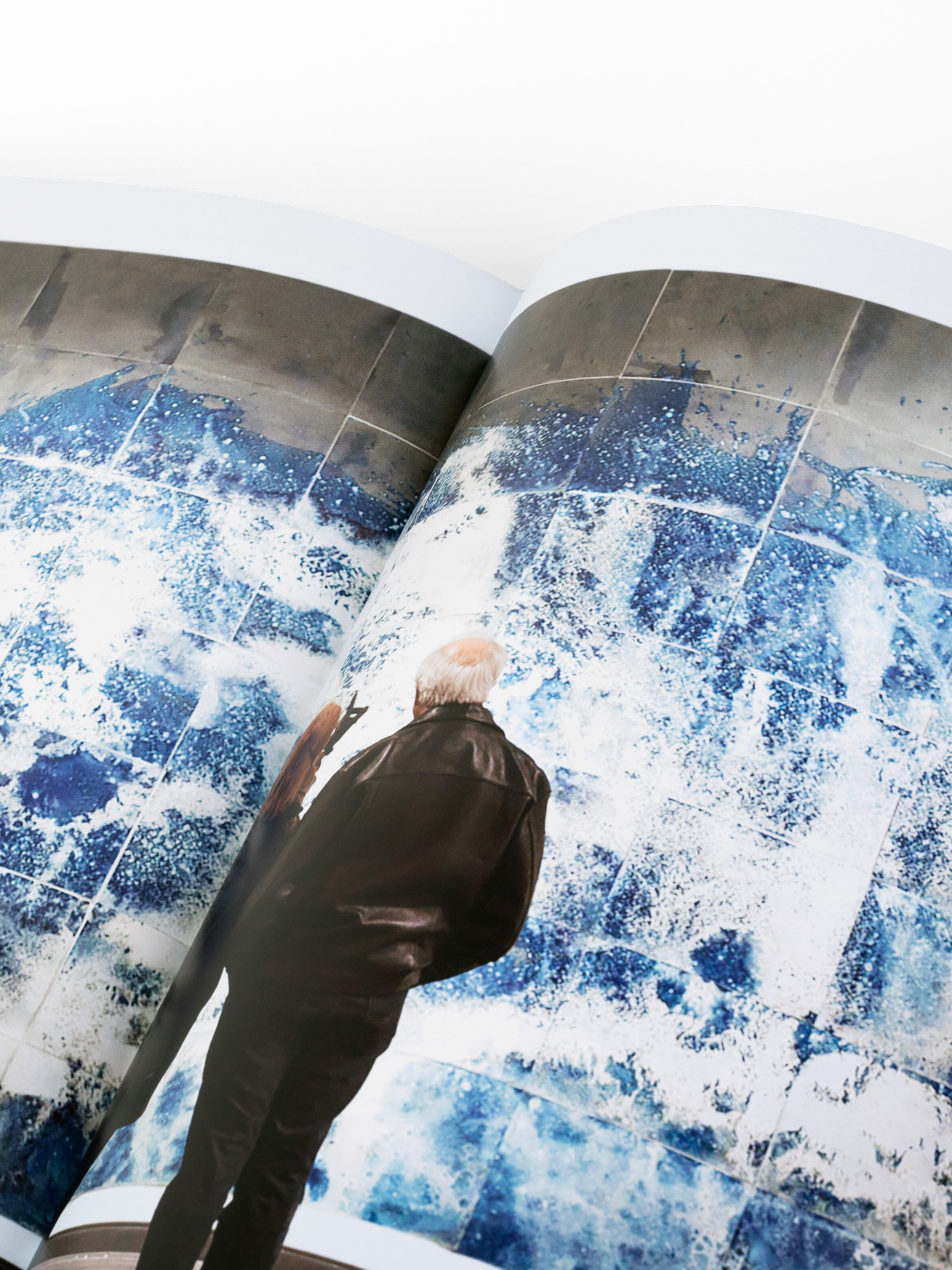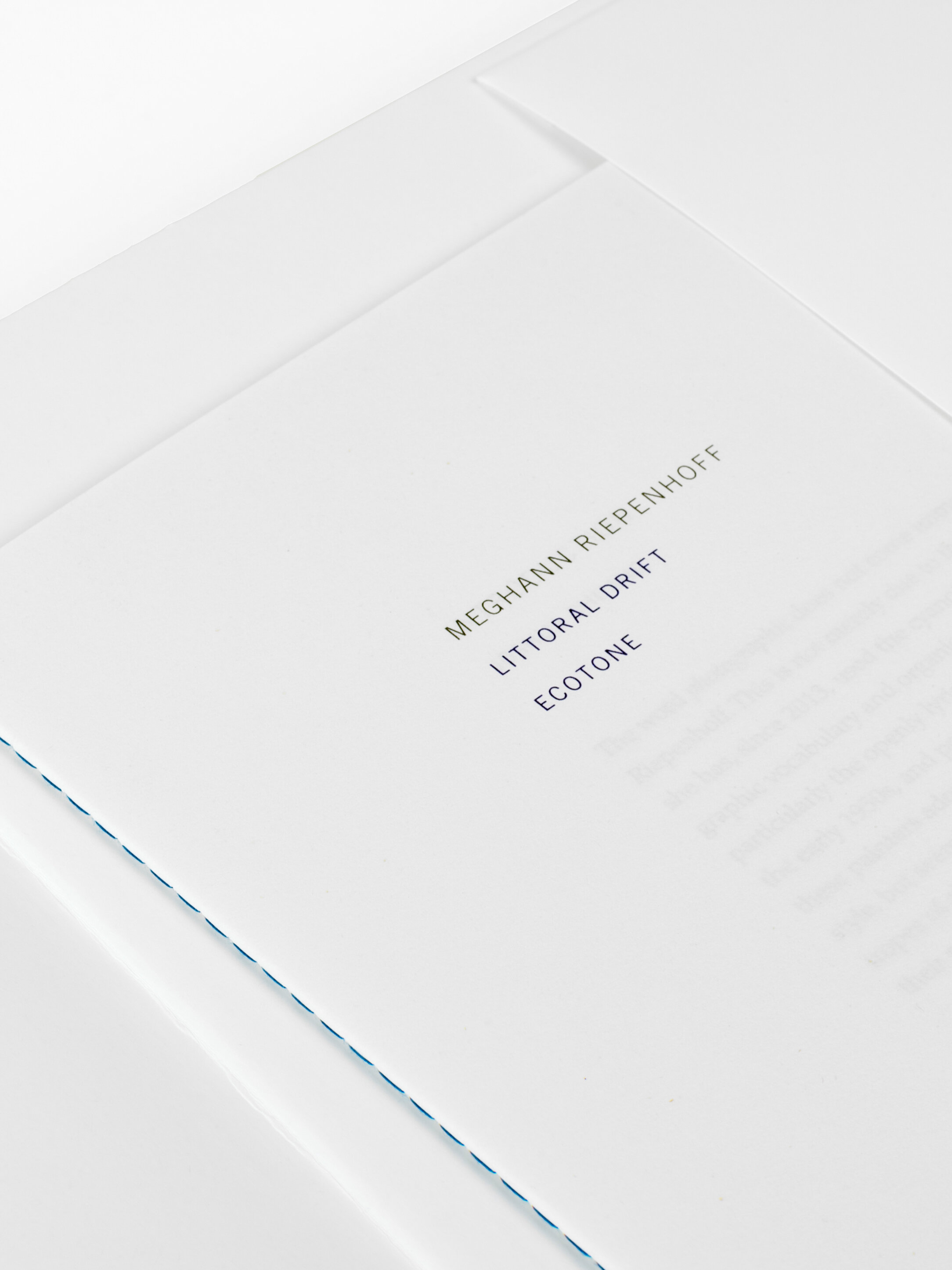Meghann Riepenhoff: Littoral Drift + Ecotone
”Meghann Riepenhoff makes such strikingly attractive abstract works that they scare me. ”
—Charles Desmarais, SF Gate
Photography by Meghann Riepenhoff
Texts by Charlotte Cotton & Joshua Chuang
Hardcover with two volumes in a Z-binding
10.5 x 13 inches
224 pages / 100 images total
ISBN: 9781942185468
Co-published with Yossi Milo
Trade: $55
Rare: $500
SOLD OUT
Limited edition available HERE.
”Meghann Riepenhoff makes such strikingly attractive abstract works that they scare me. ”
—Charles Desmarais, SF Gate
Photography by Meghann Riepenhoff
Texts by Charlotte Cotton & Joshua Chuang
Hardcover with two volumes in a Z-binding
10.5 x 13 inches
224 pages / 100 images total
ISBN: 9781942185468
Co-published with Yossi Milo
Trade: $55
Rare: $500
SOLD OUT
Limited edition available HERE.
”Meghann Riepenhoff makes such strikingly attractive abstract works that they scare me. ”
—Charles Desmarais, SF Gate
Photography by Meghann Riepenhoff
Texts by Charlotte Cotton & Joshua Chuang
Hardcover with two volumes in a Z-binding
10.5 x 13 inches
224 pages / 100 images total
ISBN: 9781942185468
Co-published with Yossi Milo
Trade: $55
Rare: $500
SOLD OUT
Limited edition available HERE.
This work stems from the artist’s fascination with the nature of our relationships to the landscape, the sublime, time, and impermanence. Both series consist of cyanotypes made directly in the landscape, where elements like precipitation, waves, wind, and sediment physically etch into the photo chemistry; the prints simultaneously expose in sunlight and wash in the water around them. Littoral Drift, a geologic term describing the action of wind-driven waves transporting sand and gravel, consists of camera-less cyanotypes made in collaboration with the landscape and the ocean, at the edge of both. The elements employed in the process—waves, rain, wind, and sediment—leave physical inscriptions through direct contact with photographic materials. Ecotone also engages dynamic photographic materials in the landscape, but collaborates with precipitation rather than ocean waves or running water in the landscape. Rain, snow, ice, fog, etc. chemically activate the photographic materials, while they expose via the residual sunlight that exists even in the heaviest storm. Riepenhoff drapes the photochemically treated paper on objects in the landscape, from windfall branches and boulders to garbage cans and fences. The pieces record the movement of water through the planetary surface, tracing topographies in both wild and built environments. Photochemically, the pieces are never wholly processed; they continue to change over time in response to environments that they encounter, blurring the line between creation and destruction. The artist selectively re-photographs moments in the evolution of the images to generate a series of static records of a transitory process. Entitled Continua, the progressive images are shown as polyptychs. Where the fugitive cyanotypes are analogies for a terrifyingly fleeting and beautiful existence, the process of re-photographing is a metaphor for the incorporation and mediation of photography in contemporary human experience.












